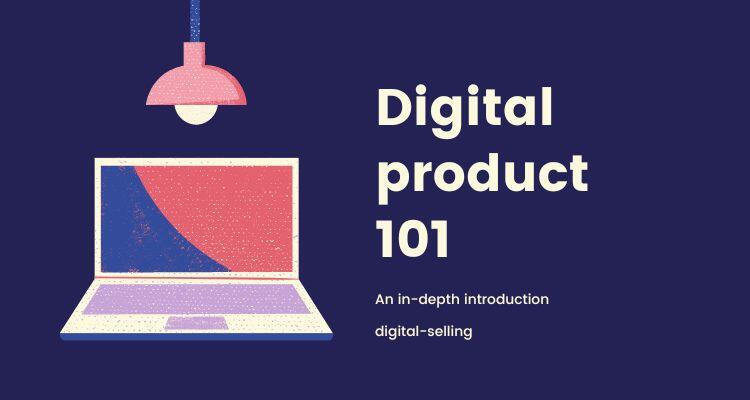Digital product 101 looks at the every changing space of digital products and how they are you can make one and earn a great income.
In today’s rapidly evolving technological landscape, understanding the fundamentals of digital products is crucial for anyone looking to thrive in the digital economy. This comprehensive guide, aptly titled “Digital Product 101,” aims to demystify the concept, development, and marketing of digital products, providing a solid foundation for both beginners and experienced professionals.
What is a Digital Product?
Digital products are intangible goods that exist in digital form. Unlike physical products, digital products can be distributed and consumed electronically. Common examples include eBooks, software, online courses, music files, and digital art. The unique characteristic of digital products is that replication and distribution can be done at minimal cost. This allows creators to reach a global audience with ease.
The Importance of Digital Products
The rise of the internet as well as digital technologies is a revolution in products creation, promotion as well as consumption.
Digital products offer several advantages:
- Scalability: Once we have our creation, digital products are available online for sell an infinite number of times without additional production costs.
- Low Overhead: There is no need for physical inventory, storage, or shipping, reducing overall business expenses.
- Global Reach: Digital products can be accessed by anyone with an internet connection, breaking down geographical barriers.
Types of Digital Products
In Digital Product 101, it’s essential to understand the diverse types of digital products available. Here are some popular categories:
- eBooks and Digital Publications: These include electronic versions of books, magazines, and newspapers. They are easily distributed through platforms like PayHip, Amazon Kindle or Apple Books.
- Software and Applications: This category covers a wide range of products from mobile apps to enterprise software solutions. They are typically distributed through app stores or direct downloads from websites.
- Online Courses and eLearning: Platforms like Udemy, Coursera, and Khan Academy have popularized this category. These products deliver educational content in a structured format, often featuring videos, quizzes, and interactive elements.
- Digital Media: This includes music, movies, and art. Services like Spotify, Netflix, and digital art marketplaces such as Etsy provide platforms for distribution.
- Templates and Tools: These are assets like website templates, graphic design elements, and productivity tools that help users complete tasks more efficiently.
Creating a Digital Product
Creating a successful digital product requires a blend of creativity, technical skills, as well as market understanding.
Here’s a step-by-step guide on Digital Product 101:
- Idea Generation: Identify a problem or need within your target audience. Conduct market research to validate your idea and ensure there is demand.
- Planning: Outline the features and functionality of your product. Such as, creating a project plan that includes timelines, resources, and budget.
- Development: Depending on the type of digital product, this phase can involve writing, coding, designing, or recording. Also, I would suggest using appropriate tools and platforms to create a high-quality product.
- Testing: Before launching, thoroughly test your product to identify and fix any issues. This ensures a smooth user experience and minimizes the risk of negative reviews.
- Launch: Choose the right platform for distribution and implement a marketing strategy to promote your product. Utilize social media, email marketing, and other channels to reach your target audience.
Marketing and Selling Digital Products
Successfully selling digital products involves strategic marketing efforts. In Digital Product 101, we highlight several effective strategies:
- Content Marketing: Create valuable content related to your product to attract and engage your target audience. This can include blog posts, videos, and social media updates.
- SEO (Search Engine Optimization): Optimize your product page and related content for search engines to improve visibility and attract organic traffic.
- Email Marketing: Build an email list of potential customers and regularly send updates, promotions, and valuable content to keep them engaged.
- Affiliate Marketing: Partner with influencers and affiliates who can promote your product to their audience in exchange for a commission on sales.
- Paid Advertising: Invest in online advertising through platforms like Google AdWords, Facebook Ads, or Instagram Ads to reach a broader audience quickly.
The Future of Digital Products
As we continue to advance technologically, the landscape of digital products will evolve. Emerging technologies like artificial intelligence (AI), virtual reality (VR), and blockchain will revolutionize the creation, distribution, and consumption of digital products. So, staying up to date about these trends is crucial for anyone in the digital product space.
Challenges in the Digital Product Market
Despite the numerous advantages, there are also challenges while developing digital products. Understanding these challenges is a critical aspect of Digital Product 101:
- Piracy: The ease of copying and distributing digital products makes them vulnerable to piracy. In addition, implementing robust digital rights management (DRM) solutions can help protect your intellectual property.
- Competition: The low barrier to entry means that the digital product market is highly competitive. Differentiating your product through unique features and high-quality content is essential.
- Technical Issues: Ensuring compatibility across different devices and platforms can be challenging. Rigorous testing as well as customer support are vital to address these issues.
Conclusion
Digital Product 101 provides a foundational understanding of what digital products are. Such as, how you can create, and the strategies for marketing and selling them. Also, as the digital economy continues to grow, mastering the basics of digital products can open up numerous opportunities for entrepreneurs and businesses alike. Whether you’re an aspiring creator or an established professional, this guide serves as a valuable resource to navigate the dynamic world of digital products. Finally, embrace the digital revolution and start exploring the endless possibilities of digital products today!
